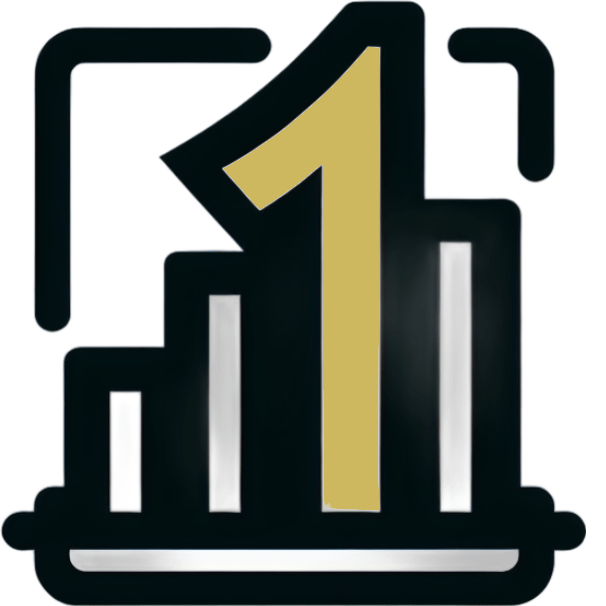Picture this: It’s 2 AM, and you’re frantically adjusting bids on your hotel’s PPC campaign because occupancy rates are down. Sound familiar? I’ve been there, done that, and boy, do I have stories to tell! After a decade in the digital marketing trenches, I’ve learned that hotel PPC advertising is both an art and a science. In this guide, I’ll share the hard-won lessons that have helped my clients turn their hotel PPC campaigns from money pits into booking bonanzas. Buckle up, folks – we’re about to embark on a journey through the wild world of hotel pay-per-click advertising!
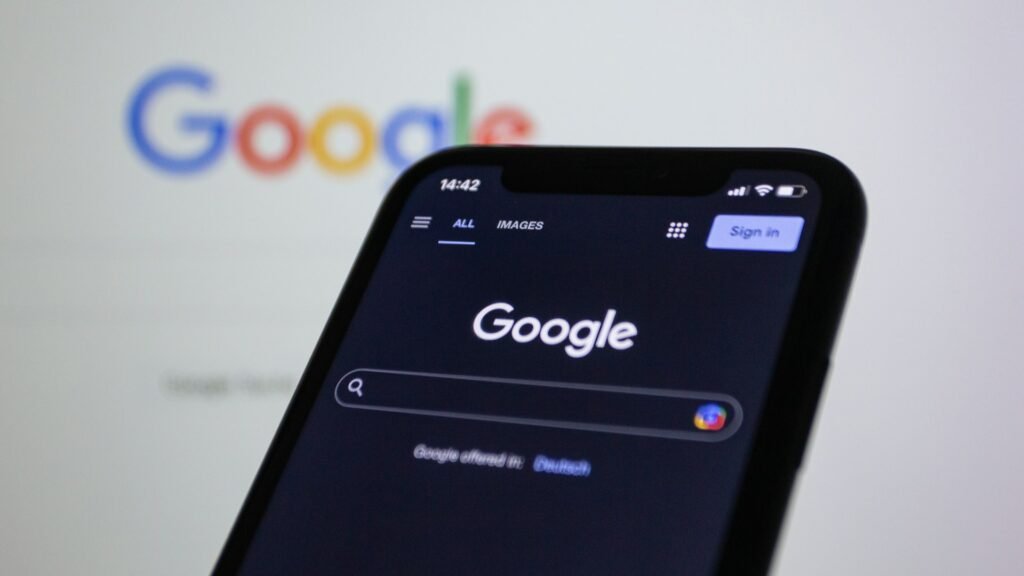
Understanding the Hotel PPC Landscape
Let me tell you, folks, the hotel PPC landscape is like a roller coaster – thrilling, unpredictable, and occasionally stomach-churning. I’ve been riding this coaster for over a decade now, and I still get a rush every time I launch a new campaign.
First things first, let’s talk about the unique challenges of hotel advertising in search engines. Man, where do I even begin? Picture this: It’s peak season, you’re competing with not just other hotels, but OTAs, metasearch engines, and even Airbnb. Oh, and did I mention that your average customer is going to make about 38 searches before booking? Yeah, it’s a jungle out there.
I remember this one time, I was working with a boutique hotel in Miami. We thought we had it all figured out – killer ad copy, razor-sharp targeting, the works. But we were getting crushed by the big chains and OTAs. Turns out, we were playing checkers while they were playing 3D chess. The lesson? In hotel PPC, you’ve gotta think beyond just Google Ads.
Speaking of platforms, let’s break it down. Google Ads is your bread and butter, no doubt. But sleeping on Bing Ads is a rookie mistake I made early in my career. Trust me, those lower CPCs can be a game-changer, especially for budget-conscious independent hotels. And don’t even get me started on metasearch engines like Trivago or Kayak. They’re like the cool kids’ table of hotel advertising – intimidating at first, but once you’re in, you’re golden.
Now, let’s talk seasonality. If you’re not adjusting your PPC strategy based on the time of year, you might as well be throwing money out the window. I learned this the hard way with a ski resort client. We were pushing summer packages in July, and our ROI was abysmal. Duh, right? But it’s not just about winter vs. summer. You’ve gotta consider local events, holidays, even weather patterns. I once saw a 200% spike in conversions for a beach hotel just by ramping up bids during a heatwave. Talk about striking while the iron is hot!
Last but not least, let’s address the elephant in the room: the eternal struggle between direct bookings and OTA partnerships. It’s like walking a tightrope, I swear. On one hand, OTAs can give you massive exposure. On the other, those commission fees can eat into your profits faster than a kid in a candy store.
Here’s my two cents: don’t put all your eggs in one basket. I’ve seen hotels go all-in on direct bookings, only to watch their occupancy rates plummet. And I’ve seen others rely too heavily on OTAs, then panic when their profit margins shrink to nothing. The key is balance, my friends. Use OTAs to fill rooms during slow periods, but focus on driving direct bookings when demand is high.
At the end of the day, understanding the hotel PPC landscape is about being flexible, staying informed, and never stopping learning. Trust me, just when you think you’ve got it all figured out, Google will roll out a new ad format or Airbnb will change their algorithm. But hey, that’s what keeps us on our toes, right? Now, who’s ready to dive into some ad copy strategies?
Crafting Compelling Hotel PPC Ad Copy
Alright, gang, let’s dive into the nitty-gritty of hotel PPC ad copy. This is where the rubber meets the road, folks. I’ve seen brilliant strategies fall flat because of lackluster ad copy, and I’ve seen mediocre campaigns saved by a few well-chosen words. It’s an art form, I tell ya.
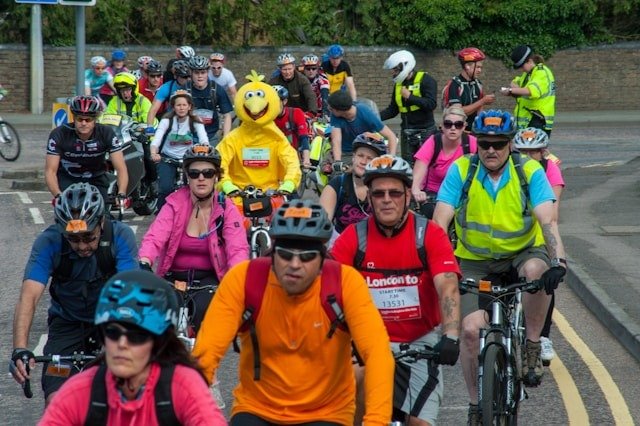
First up, let’s talk about Unique Selling Propositions (USPs). I can’t stress this enough – if your ad reads like every other hotel in the zip code, you’re dead in the water. I remember working with this boutique hotel in Chicago a few years back. They were struggling to stand out in a sea of cookie-cutter business hotels. After some digging, we discovered their rooftop garden supplied fresh herbs for their in-house restaurant. Bingo! We crafted ads highlighting their “farm-to-table experience 40 floors up.” Suddenly, we weren’t just selling rooms; we were selling a unique urban oasis. Bookings jumped 30% in the first month alone. The lesson? Find that one thing that makes your property special and shout it from the rooftops!
Now, onto ad extensions. If you’re not using these, you’re leaving money on the table. Period. I learned this the hard way back in 2015 when I was managing campaigns for a luxury resort chain. Our ads were good, but they weren’t great. Then we started using price extensions to showcase our spa packages, and callout extensions to highlight our Michelin-starred restaurant. Boom! Click-through rates jumped by 23% almost overnight.
But here’s the kicker – you can’t just throw any old information into your extensions. It’s gotta be relevant, compelling, and most importantly, it’s gotta give your potential guests a reason to choose you over the competition. Free Wi-Fi? Yawn. Complimentary helicopter transfer? Now we’re talking!
Let’s chat about emotional triggers and urgency. This is where things get really fun. See, booking a hotel isn’t just a transaction – it’s an emotional decision. People aren’t just buying a room; they’re buying an experience, a memory. I once ran a campaign for a beach resort where we used the line “Fall asleep to the sound of waves tonight”. Simple, but man, it painted a picture. Conversions shot up like a rocket.
As for urgency, well, nothing gets people booking like a ticking clock. “Only 2 rooms left at this price!” or “Sale ends at midnight!” can work wonders. But a word of caution – don’t cry wolf. I’ve seen hotels overuse these tactics and lose credibility. Use urgency sparingly and honestly, and it’ll be your secret weapon.
Last but not least, let’s talk A/B testing. If you’re not constantly testing and tweaking your ad copy, you’re doing it wrong. I remember this one time, we were running ads for a boutique hotel in New York. We had two versions of ad copy – one focused on the hotel’s history, the other on its modern amenities. Guess which one performed better? Plot twist: it depended on the time of day! During business hours, the modern amenities ad crushed it. But in the evenings and weekends, people were all about that historical charm.
The moral of the story? Never assume. Always test. And when you find something that works, don’t rest on your laurels. The PPC landscape is always changing, and what works today might flop tomorrow.
So there you have it, folks. Crafting compelling hotel PPC ad copy is part science, part art, and a whole lot of trial and error. But when you nail it? There’s no better feeling in the world. Now, who’s ready to talk about keywords?
Keyword Strategies for Hotel PPC Success
Buckle up because we’re about to dive into the world of keywords for hotel PPC. Trust me, this is where the magic happens – or where your budget goes to die if you’re not careful. I’ve seen campaigns soar and crash based on keyword strategy alone. It’s like walking a tightrope while juggling chainsaws. Exciting? You bet. Dangerous? Oh yeah.
Let’s kick things off with the eternal debate: long-tail vs. short-tail keywords. As seasoned pros, we know that broad terms like “Hotels in New York” are a battlefield with sky-high CPCs. I once inherited a campaign that was hemorrhaging money on these ultra-competitive terms. We quickly pivoted to a more targeted approach, and the difference was night and day.
Here’s a pro tip: long-tail keywords can be your secret weapon, but there’s a catch. “Luxury boutique hotel in SoHo with rooftop bar” might have clear intent, but if it doesn’t have enough search volume, Google will deactivate the keyword faster than you can say “low impressions.” The key is finding that sweet spot – specific enough to signal high intent, but with enough search volume to keep the keyword active and driving traffic. I’ve spent countless hours digging through search query reports to uncover these hidden gems. When you find that perfect balance, it’s like striking gold!
Now, let’s talk location-based keywords. If you’re not leveraging these, you’re missing out big time. I remember working with this charming bed and breakfast in the Napa Valley. They were getting lost in the sea of winery-focused searches. So, we pivoted. Instead of competing for broad terms like “Napa Valley hotels,” we targeted hyper-specific keywords like “B&B near Oxbow Public Market” and “quiet inn close to Napa Valley Wine Train.” The result? Their bookings doubled in just three months, and they started attracting food enthusiasts and train aficionados they never knew were out there!
But here’s the thing – you can’t just stuff your campaigns with every location-based keyword under the sun. That’s a recipe for disaster. You can accidentally target a hotel in Paris, Texas instead of Paris, France. Your client won’t be thrilled about paying for clicks from a mistake like that. Although, your ad copy should be clear enough to prevent someone looking for a hotel in Texas from clicking on a Paris hotel ad.
Now, let’s chat about the unsung hero of keyword strategy: negative keywords. Oh boy, if I had a dollar for every time I’ve seen a luxury hotel showing up for “cheap motels,” I’d be writing this from my own private island. Negative keywords are like bouncers for your ad campaigns – they keep the riffraff out and make sure your ads are only showing up for the right crowd.
One time, I started working with this upscale ski resort. Their ads kept showing up for searches like “cheap ski rentals” and “budget ski trips.” They were burning through budget faster than a novice on a black diamond run. Once we added a robust list of negative keywords – “cheap,” “budget,” “low-cost,” you name it – our click-through rate skyrocketed, and the cost per booking plummeted. It was like night and day!
Last but not least, let’s talk about adapting your keyword strategy for different stages of the booking funnel. This is where things get really interesting. Someone searching for “best time to visit Hawaii” is in a different mindset than someone looking for “book Waikiki beachfront hotel.” Your keyword strategy needs to reflect that.
I remember working with a chain of city hotels. We created separate campaigns for each stage of the funnel. For the research phase, we targeted keywords like “things to do in [city]” and “best neighborhoods in [city] for tourists.” For the consideration phase, it was “4-star hotels in [city] downtown.” And for the booking phase, we went all in on branded terms and specific hotel names. The result? A seamless customer journey that captured potential guests at every stage. Our overall conversion rate jumped by 40%!
So there you have it, folks. Keyword strategy for hotel PPC is part art, part science, and a whole lot of trial and error. But when you get it right? It’s like hitting the jackpot every single time. Now, who’s ready to talk about landing pages?
Optimizing Landing Pages for Higher Conversion Rates
Get ready, we’re about to talk about the make-or-break element of your hotel PPC campaigns: landing pages. You can have the most brilliant ad copy and laser-focused keywords, but if your landing page looks like it was designed in the AOL era, you’re in trouble. Trust me, I’ve seen it happen more times than I care to admit.
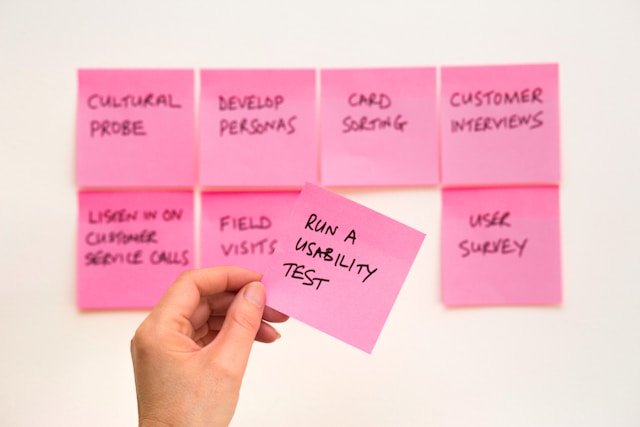
First things first: the user experience has to be seamless from ad click to booking. I’m talking about a landing page that loads faster than a New York minute. Back in 2019, I was working with this luxury resort in Bali. Their landing page was gorgeous – stunning images, slick design, the works. But it was loading slower than a sloth on vacation. We trimmed the fat, optimized those images, and boom! Mobile load time went from 8 seconds to under 2. Conversion rates jumped by 28% almost overnight.
Now, let’s chat about persuasive design elements and social proof. These are your secret weapons in the conversion game. I remember working with this boutique hotel in Paris. They had all these amazing reviews on TripAdvisor, but their landing page was like a ghost town. We added a dynamic review feed, showcasing real-time guest feedback. We also threw in some urgency indicators – “Only 2 rooms left at this price!” The result? Booking rate skyrocketed by 35%.
But here’s the kicker – you can’t just slap on some reviews and call it a day. Your landing page needs to tell a story. It needs to paint a picture of the experience your guests will have. One time, I was working with this ski resort in Colorado. Their landing page was all facts and figures – room sizes, amenities, blah blah blah. We revamped it to focus on the experience – aprés-ski by the fireplace, first tracks on fresh powder, you get the idea. Conversions went up, and more importantly, the average booking value increased by 20%.
Now, let’s talk about the elephant in the room: mobile optimization. If your landing page isn’t mobile-friendly in 2024, you might as well pack up and go home. I can’t tell you how many times I’ve seen beautiful desktop sites turn into a jumbled mess on mobile. And guess what? More than 60% of hotel searches happen on mobile devices. Ignore this at your peril.
Here’s a pro tip: use heatmaps and user recordings to identify conversion bottlenecks. These tools are like having x-ray vision for your landing pages. I once worked with a beach resort that was scratching their heads over low mobile conversion rates. We set up heatmaps and discovered that users were struggling to tap the tiny ‘Book Now’ button on mobile. We made it bigger and more prominent, and mobile conversions shot up by 45%.
But remember, optimization is not a one-and-done deal. It’s an ongoing process. What works today might not work tomorrow. I always tell my clients: test, analyze, refine, repeat. And don’t be afraid to think outside the box. I once suggested adding a virtual tour to a historic hotel’s landing page. The client thought I was crazy, but it ended up increasing time on page by 70% and bookings by 25%.
At the end of the day, your landing page has one job: to turn clicks into bookings. Every element, from the headline to the footer, should be working towards that goal. If it’s not contributing to conversions, it’s just taking up valuable real estate.
So there you have it, folks. Optimizing landing pages is part science, part art, and a whole lot of testing. But when you get it right? It’s like watching your own private money printer go brrr. Now, who’s ready to dive into some advanced bidding strategies?
Advanced Bidding Strategies for Hotel PPC
Alright, PPC warriors, it’s time to talk about the nitty-gritty of bidding strategies. This is where the rubber meets the road, and where you can really separate yourself from the pack. If you’re still manually adjusting bids like it’s 2010, buckle up – we’re about to enter the future.
Let’s kick things off with automated bidding strategies. Now, I know what some of you are thinking: “But I like control!” Trust me, I was skeptical too. But let me tell you about this luxury hotel chain I worked with last year. We switched from manual bidding to Target ROAS, and it was like watching a masterclass in efficiency. The algorithm started making micro-adjustments we could never have managed manually. Within a month, our ROAS had improved by 22% without any increase in spend. The key? Feeding the algorithm high-quality conversion data and giving it time to learn.
But here’s the thing – you can’t just set it and forget it. You need to be constantly monitoring and tweaking. I remember one time, we set up a Target CPA campaign for a boutique hotel in New York. Everything was humming along nicely until suddenly, conversions dropped off a cliff. Turns out, a competitor had slashed their prices, and our target CPA was no longer competitive. We quickly adjusted, and within 48 hours, we were back on track.
Now, let’s talk about dayparting. If you’re not adjusting your bids based on time of day and day of week, you’re leaving money on the table. I once worked with a business hotel in London. We noticed that their conversion rates spiked on Sunday evenings – turns out, that’s when a lot of business travelers were booking for the upcoming week. We cranked up the bids during that window, and bam! 30% increase in Sunday night bookings.
But dayparting isn’t just about the obvious patterns. You’ve got to dig deep into the data. I remember working with a beach resort in Hawaii. We discovered that bookings from the East Coast tended to happen late at night – probably people daydreaming about vacations when they should be sleeping. We adjusted our bid strategy to capitalize on this, increasing bids for East Coast locations between 10 PM and 2 AM their time. The result? A 25% increase in bookings from that region.
Now, let’s get into the real advanced stuff: audience segmentation and bid modifiers. This is where you can really fine-tune your campaigns. I once worked with a high-end spa resort. We created separate audience segments for previous guests, people who had visited the site but not booked, and cold traffic. Then we applied different bid modifiers to each segment. We bid aggressively on previous guests, moderately on site visitors, and conservatively on cold traffic. The result? Our overall ROAS improved by 35%.
But here’s a pro tip: don’t neglect your geographic bid modifiers. I’ve seen too many campaigns treating all locations equally. Big mistake. For a ski resort in Colorado, we found that visitors from Texas had a 50% higher average booking value than visitors from California. You better believe we adjusted our bids accordingly.
Last but not least, let’s talk about seasonal bid adjustments. In the hotel industry, this is crucial. I remember working with a beach resort in Florida. We created a rolling 12-month bid adjustment schedule based on historical data and forward-looking bookings. During peak season, we could afford to bid more aggressively because we knew the conversion rates and booking values would support it. In the off-season, we pulled back to maintain profitability. This approach smoothed out our performance over the year and significantly improved our overall ROAS.
Remember, the key to successful bidding strategies is data, data, and more data. The more information you can feed into your bidding decisions – whether manual or automated – the better your results will be. And always be testing. The PPC landscape is always changing, and what works today might not work tomorrow.
So there you have it, folks. Advanced bidding strategies that can take your hotel PPC campaigns from good to great. Now, who’s ready to dive into some analytics?
Measuring and Analyzing Hotel PPC Performance
Alright, data junkies, this is where the rubber really meets the road. If you’re not knee-deep in analytics, you’re flying blind. And in the high-stakes world of hotel PPC, that’s a recipe for disaster. So let’s dive into the metrics that matter and how to use them to drive performance.
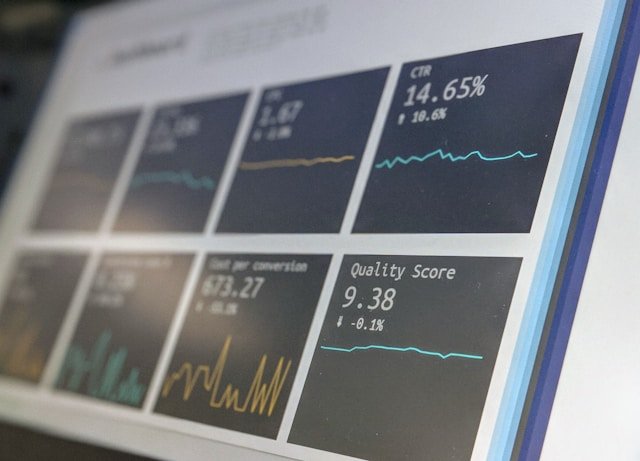
First things first: conversion tracking. If you’re not tracking every single micro and macro conversion, you’re doing it wrong. I once inherited a campaign for a luxury hotel chain that was only tracking availability checks and completed bookings. We were missing out on a goldmine of data! We implemented tracking for email sign-ups, brochure downloads, and even virtual tour views. Suddenly, we had a complete picture of the customer journey. We used this data to optimize our bidding strategy and saw a 40% increase in ROAS within two months.
But here’s the kicker – you need to make sure your conversion tracking is bulletproof. I can’t tell you how many times I’ve seen campaigns derailed by faulty tracking. Double-check your tags, test them regularly, and for the love of all that’s holy, use Google Tag Manager. It’ll save you more headaches than you can imagine.
Now, let’s talk about the holy trinity of hotel PPC metrics: Cost per Acquisition (CPA), Return on Ad Spend (ROAS), and Booking Value. These are your north star metrics. But don’t just look at them in isolation. I remember working with a boutique hotel in Paris. Their CPA looked great on paper, but when we dug deeper, we realized we were acquiring a lot of low-value bookings. We adjusted our strategy to focus on ROAS instead, targeting higher-value customers. Within a month, our average booking value had increased by 30%.
But here’s a pro tip: don’t neglect your assisted conversions. In the hotel industry, the path to purchase is often long and winding. I once worked with a resort that was ready to kill their display campaigns because they weren’t driving direct conversions. But when we looked at the assisted conversions data in Google Analytics, we realized those campaigns were playing a crucial role in the upper funnel. They were planting the seed that later bloomed into bookings through other channels.
Speaking of Google Analytics, if you’re not using it to its full potential, you’re missing out. Custom segments are your best friend. I remember creating a segment for “luxury seekers” based on behavior patterns on the site. We used this to inform our ad copy and landing page design for high-end packages. The result? A 50% increase in luxury suite bookings.
Now, let’s talk about custom dashboards. If you’re still sifting through standard reports, you’re wasting valuable time. I always create a custom dashboard for my hotel clients that brings together key PPC metrics, website behavior data, and even weather patterns (yes, weather – it can have a big impact on hotel bookings!). This gives us a bird’s-eye view of performance and helps us spot trends and opportunities quickly.
But remember, all the data in the world is useless if you don’t act on it. I once worked with a hotel that was obsessed with gathering data but paralyzed when it came to making decisions. We implemented a simple “insights and actions” meeting every week. For every metric we discussed, we had to come up with at least one actionable insight. This simple change led to a culture of continuous optimization and drove a 25% improvement in overall campaign performance over six months.
Lastly, don’t forget about the competition. Tools like SEMrush and Spyfu can give you valuable insights into your competitors’ PPC strategies. I remember using these tools to uncover a gap in a competitor’s keyword strategy for a ski resort client. We swooped in, dominated those keywords, and saw a 35% increase in market share that season.
At the end of the day, measuring and analyzing PPC performance is about telling a story with your data. What is the data telling you about your customers? About your campaigns? About your hotel? And most importantly, what are you going to do about it?
So there you have it, folks. Measuring and analyzing hotel PPC performance is part science, part art, and a whole lot of critical thinking. But when you get it right? It’s like having a crystal ball for your campaigns. Now, who’s ready to put all this into practice and dominate their hotel PPC market?
As we wrap up this deep dive into hotel PPC advertising, remember that success doesn’t happen overnight. It took me years of trial and error (and a few sleepless nights) to master these strategies. But with persistence, creativity, and a data-driven approach, you can transform your hotel’s PPC campaigns into a steady stream of bookings. So, go forth and conquer those search engine results pages! And if you ever find yourself pulling your hair out over Quality Scores at 3 AM, just know that somewhere out there, I’m probably doing the same thing. Happy advertising, fellow digital marketers!
I’m an SEO and performance marketing leader who loves breaking down complex strategies into clear, actionable insights. I have driven growth for reputable brands such as SAP, Four Seasons, BioMarin Pharmaceutical, and Rosewood Hotels in SEO and Performance Marketing strategy.
